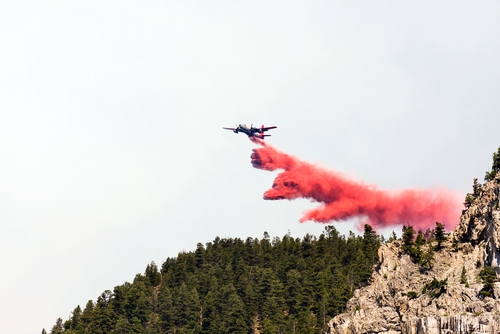
SAN FRANCISCO, Calif. — Pacific Gas and Electric Company (PG&E) has begun daily aerial fire patrols across hundreds of miles of its service area to assist state and local fire agencies with early fire detection and response this summer.
The patrols, which will continue through October, will take place over many fire-prone areas in PG&E’s service area including the Sierra Nevada Mountains in Northern and Central California, in Mendocino County and along the Redwood and Central Coasts.
In 2015, the second year of the patrols, PG&E planes spotted 146 fires and, in 25 instances, PG&E was the first to report fires to CAL FIRE or the U.S. Forest Service. Early detection of smoke or fire allowed those agencies to respond more quickly and accurately and extinguish fires before they spread.
PG&E funds the daily fire patrols as part of its comprehensive drought emergency response plan. Using fixed-wing aircraft, fire spotters will operate along five routes:
- Redding to Auburn in the Northern Sierra
- Auburn to Auberry in the Central Sierra
- Vacaville to Santa Maria near the coast
- Mendocino County
- Shasta, Humboldt, Tehama, Glenn, Colusa and Lake counties, west of the Sacramento River (added for 2016)
Patrols will fly seven days a week from mid-afternoon until dusk—the time of day when wildfires are most likely to ignite with hot, dry weather at its peak. On days when potential for wildfires is heightened and red-flag warnings are issued, PG&E will conduct special vegetation-management ground patrols and add aerial patrols in the designated red-flag geographies.
The patrols are coordinated through PG&E’s aerial operations. Spotters report any smoke or fire they see to PG&E, CAL FIRE and the U.S. Forest Service, if it is on federal land.
“PG&E is committed to continue this very successful aerial fire-patrol program as we partner with federal, state and local agencies to mitigate the increased threat of wildfire as we’re seeing record tree mortality caused by one of the most severe droughts in state history. We encourage all of our customers to be prepared and have a plan in case of emergencies,” said Barry Anderson, vice president of electric distribution for PG&E.
“The long-term impacts of the drought, combined with significant bark-beetle damage, continue to be a major concern as we once again enter the peak of California’s wildfire season. CAL FIRE has a robust aerial firefighting program supporting our ground forces in their efforts to keep 95 percent of fires at 10 acres or less. PG&E’s proactive patrols serve to enhance our efforts. Reporting wildfires is everybody’s responsibility and no one should assume somebody else has. We appreciate the survey work PG&E does from the air, looking for potential fire starts, especially in those areas most impacted by the unprecedented tree mortality,” said Chief Dave Teter, CAL FIRE deputy director of fire protection.
In addition to its daily aerial fire patrols, PG&E is conducting enhanced ground patrols on specific electrical circuits to inspect and remove dead or dying trees that could fall into lines and spark a fire.
PG&E is also supporting CAL FIRE’s “Prepare for Bark Beetle” public awareness campaign. This month, PG&E will carry the message to 4 million customers on their paper billing envelopes. Another 1.7 million customers who receive e-bills will receive it as a bill insert.
Dead trees are an extreme fire danger because they allow wildfires to spread rapidly. Recent reports have indicated that California is home to as many as 29 million dead or dying trees. If you have dead or dying trees on your property, the entire tree needs to be removed. Contact PG&E before removing dead trees near power lines. You can learn more about bark beetle and how to remove dead trees on your property through CAL FIRE’s public education effort Ready for Wildfire.



